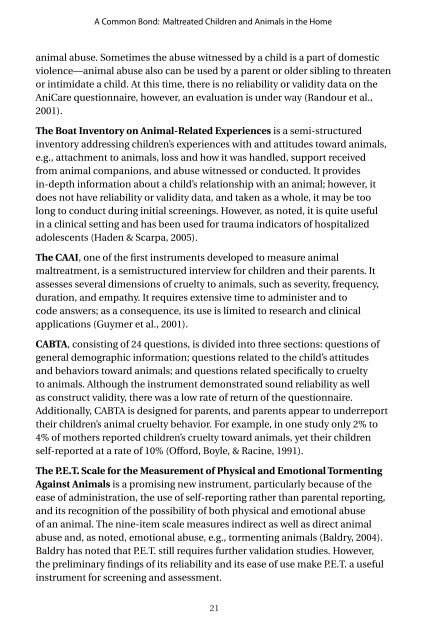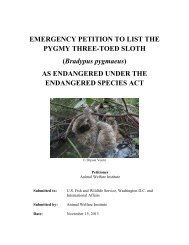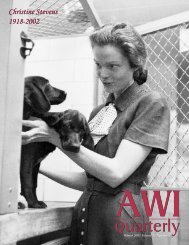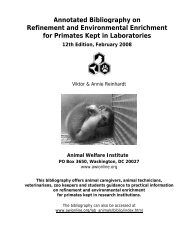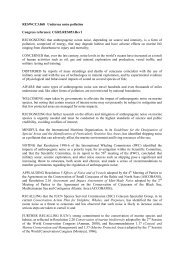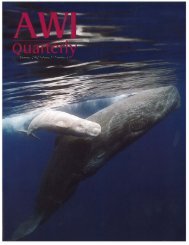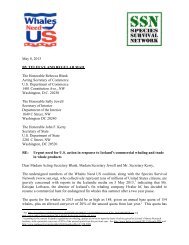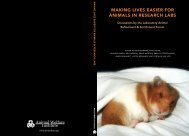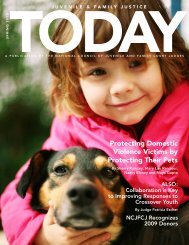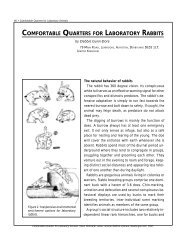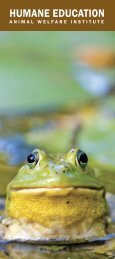A Common Bond - The National Link Coalition
A Common Bond - The National Link Coalition
A Common Bond - The National Link Coalition
- No tags were found...
Create successful ePaper yourself
Turn your PDF publications into a flip-book with our unique Google optimized e-Paper software.
A <strong>Common</strong> <strong>Bond</strong>: Maltreated Children and Animals in the Homeanimal abuse. Sometimes the abuse witnessed by a child is a part of domesticviolence—animal abuse also can be used by a parent or older sibling to threatenor intimidate a child. At this time, there is no reliability or validity data on theAniCare questionnaire, however, an evaluation is under way (Randour et al.,2001).<strong>The</strong> Boat Inventory on Animal-Related Experiences is a semi-structuredinventory addressing children’s experiences with and attitudes toward animals,e.g., attachment to animals, loss and how it was handled, support receivedfrom animal companions, and abuse witnessed or conducted. It providesin-depth information about a child’s relationship with an animal; however, itdoes not have reliability or validity data, and taken as a whole, it may be toolong to conduct during initial screenings. However, as noted, it is quite usefulin a clinical setting and has been used for trauma indicators of hospitalizedadolescents (Haden & Scarpa, 2005).<strong>The</strong> CAAI, one of the first instruments developed to measure animalmaltreatment, is a semistructured interview for children and their parents. Itassesses several dimensions of cruelty to animals, such as severity, frequency,duration, and empathy. It requires extensive time to administer and tocode answers; as a consequence, its use is limited to research and clinicalapplications (Guymer et al., 2001).CABTA, consisting of 24 questions, is divided into three sections: questions ofgeneral demographic information; questions related to the child’s attitudesand behaviors toward animals; and questions related specifically to crueltyto animals. Although the instrument demonstrated sound reliability as wellas construct validity, there was a low rate of return of the questionnaire.Additionally, CABTA is designed for parents, and parents appear to underreporttheir children’s animal cruelty behavior. For example, in one study only 2% to4% of mothers reported children’s cruelty toward animals, yet their childrenself-reported at a rate of 10% (Offord, Boyle, & Racine, 1991).<strong>The</strong> P.E.T. Scale for the Measurement of Physical and Emotional TormentingAgainst Animals is a promising new instrument, particularly because of theease of administration, the use of self-reporting rather than parental reporting,and its recognition of the possibility of both physical and emotional abuseof an animal. <strong>The</strong> nine-item scale measures indirect as well as direct animalabuse and, as noted, emotional abuse, e.g., tormenting animals (Baldry, 2004).Baldry has noted that P.E.T. still requires further validation studies. However,the preliminary findings of its reliability and its ease of use make P.E.T. a usefulinstrument for screening and assessment.21


